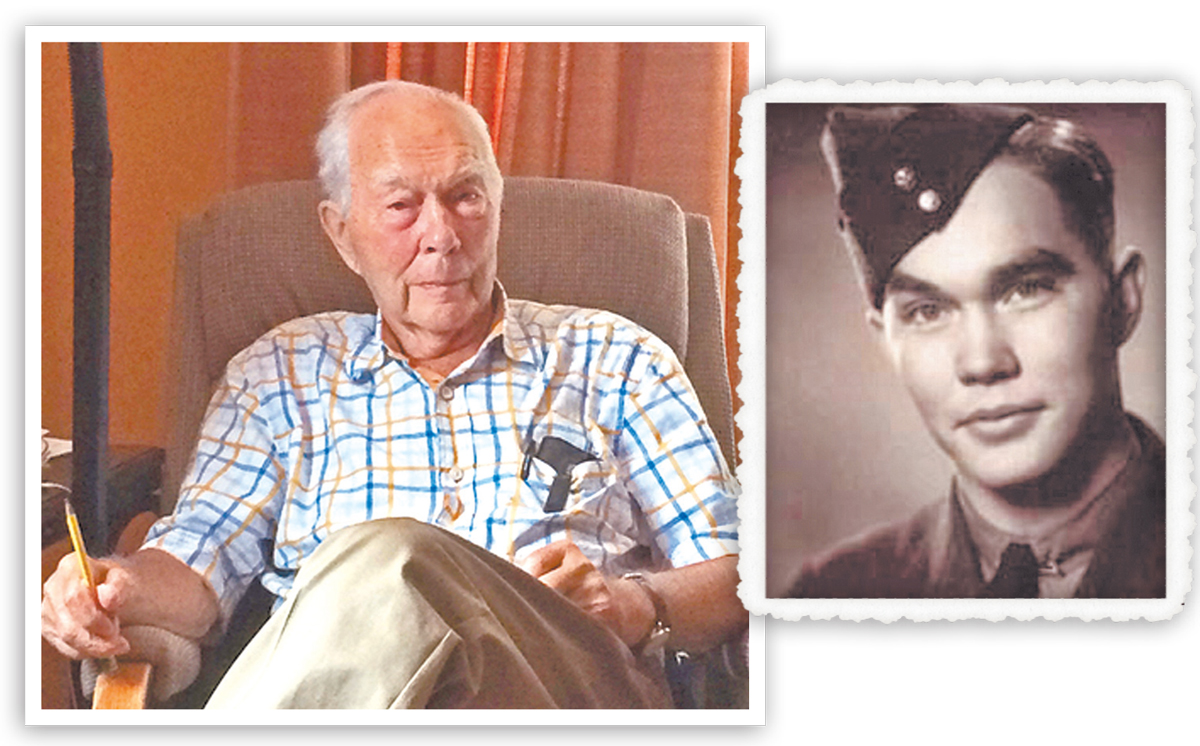Farewell to Canada’s last Dambuster
By Lookout on Feb 21, 2019 with Comments 1
RCAF Public Affairs ~
Canada’s last Dambuster has slipped the surly bonds of earth.
Sgt (Retired) Frederick Edwin Sutherland died Monday, Jan. 21, 2019, at the age of 95. He was the last living Canadian who participated in the famed Dambusters Raid on the night of May 16, 1943. The raid was carried out by the Royal Air Force’s 617 Squadron, formed specifically for the secret mission.
Only one Dambuster is still with us: the RAF’s Squadron Leader George Leonard “Johnny” Johnson, who is 97.
Sergeant Sutherland joined the Royal Canadian Air Force at the age of 18 and was only 20 when he became front gunner with Flight Lieutenant Les Knight’s Lancaster bomber crew at 617 Squadron. After the development of the innovative “bouncing bomb” by Barnes Wallis and weeks of practice by the hand-picked aircrews, 19 specially-modified Lancasters and their 133 crew members were sent on a daring mission to destroy the Möhne, Sorpe, Eder and Ennepe dams in the Ruhr River in the heartland of Germany’s industrial complex. The mission was dubbed “Operation Chastise”.
Flight Lieutenant Knight’s crew breached the Eder Dam on the last run against the structure and returned safely to England. However, eight aircraft were lost during the raid; of the 133 men who took off from RAF Scampton near Lincoln, England, 53 were killed, including 14 Canadians. Seventeen members of the RCAF survived: 16 Canadians and one American.
Sergeant Sutherland was not so fortunate four months later when his crew set out to attack the Dortmund-Ems Canal in Germany on the night of Sept. 15, 1943. Their Lancaster was hit, but Flight Lieutenant Knight managed to get the damaged aircraft across the border to Holland before the crew bailed out. Flight Lieutenant Knight was killed, however, trying to land the crippled Lancaster
Sergeant Sutherland was picked up by the Dutch resistance, given clothing and false papers, and put on a train—filled with Germans—to Paris. From Paris, he and his crewmate, Flying Officer Harold Sidney Hobday, travelled south by train and truck. They walked across the Pyrenees and eventually to Gibraltar on the famed “Chemin de la Liberté” route. From there he was flown back to England.
“Fred’s flying career was over,” says journalist Elinor Florence, whose cousin Margaret was married to Sergeant Sutherland. “Once an airman was rescued by the Resistance, he wasn’t allowed to fly again in case he was captured and forced to reveal the identities of his rescuers.”
He sailed back to Canada in December, reaching Edmonton in January and marrying Margaret the next day: Jan. 5, 1944. He had to get his parents’ permission to marry, however, because he hadn’t yet reached 21—legal age to marry.
“After the war, he became a forestry inspector for the Government of Alberta,” continues Ms. Florence, “and worked in Calgary, Edmonton and Rocky Mountain House, where he retired.”
With files from Elinor Florence
Filed Under: Top Stories
About the Author:







Blue skies, Sir. Thank you for your service. Per Ardua Ad Astra.